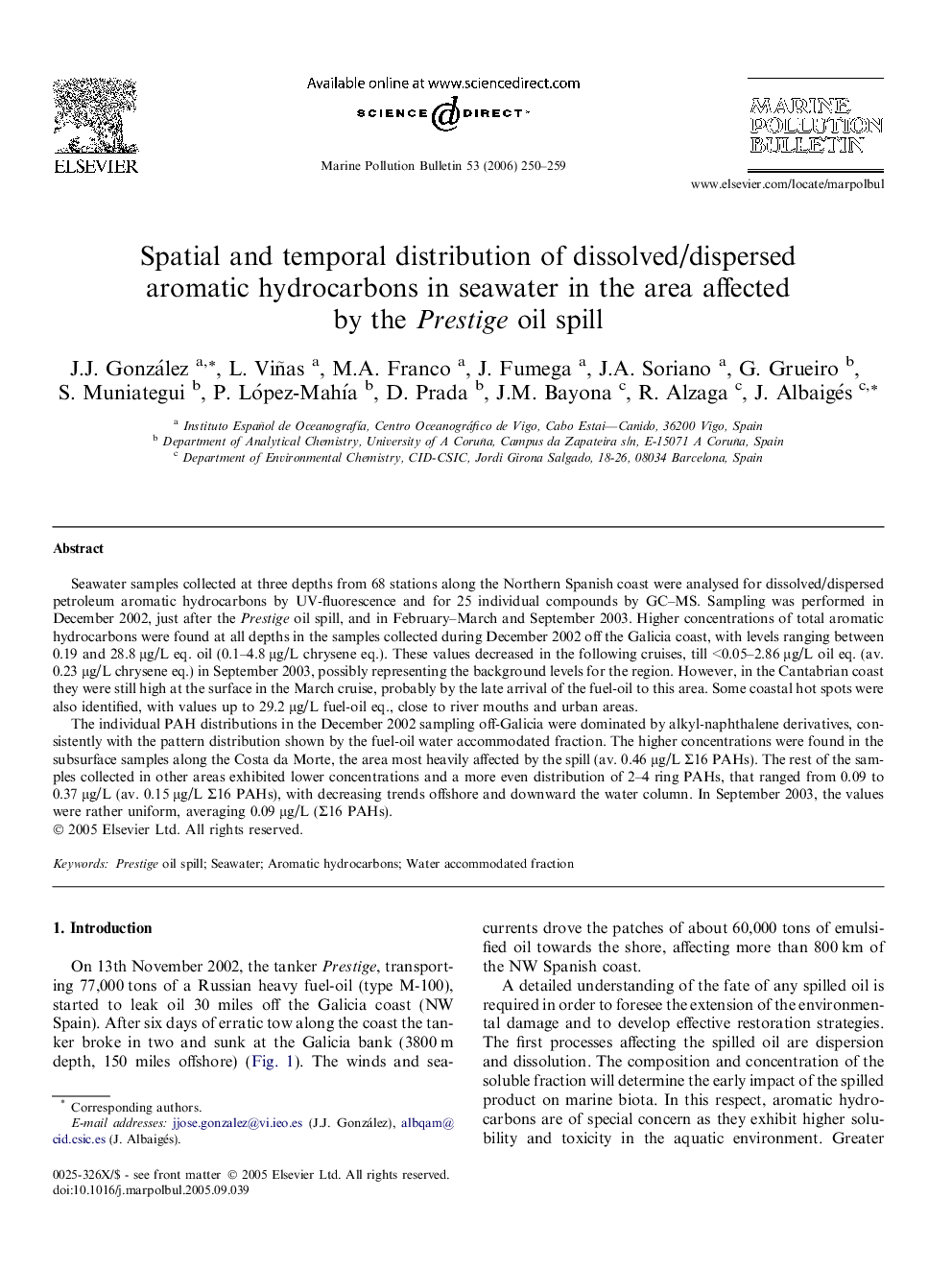| Article ID | Journal | Published Year | Pages | File Type |
|---|---|---|---|---|
| 4477748 | Marine Pollution Bulletin | 2006 | 10 Pages |
Seawater samples collected at three depths from 68 stations along the Northern Spanish coast were analysed for dissolved/dispersed petroleum aromatic hydrocarbons by UV-fluorescence and for 25 individual compounds by GC–MS. Sampling was performed in December 2002, just after the Prestige oil spill, and in February–March and September 2003. Higher concentrations of total aromatic hydrocarbons were found at all depths in the samples collected during December 2002 off the Galicia coast, with levels ranging between 0.19 and 28.8 μg/L eq. oil (0.1–4.8 μg/L chrysene eq.). These values decreased in the following cruises, till <0.05–2.86 μg/L oil eq. (av. 0.23 μg/L chrysene eq.) in September 2003, possibly representing the background levels for the region. However, in the Cantabrian coast they were still high at the surface in the March cruise, probably by the late arrival of the fuel-oil to this area. Some coastal hot spots were also identified, with values up to 29.2 μg/L fuel-oil eq., close to river mouths and urban areas.The individual PAH distributions in the December 2002 sampling off-Galicia were dominated by alkyl-naphthalene derivatives, consistently with the pattern distribution shown by the fuel-oil water accommodated fraction. The higher concentrations were found in the subsurface samples along the Costa da Morte, the area most heavily affected by the spill (av. 0.46 μg/L Σ16 PAHs). The rest of the samples collected in other areas exhibited lower concentrations and a more even distribution of 2–4 ring PAHs, that ranged from 0.09 to 0.37 μg/L (av. 0.15 μg/L Σ16 PAHs), with decreasing trends offshore and downward the water column. In September 2003, the values were rather uniform, averaging 0.09 μg/L (Σ16 PAHs).
